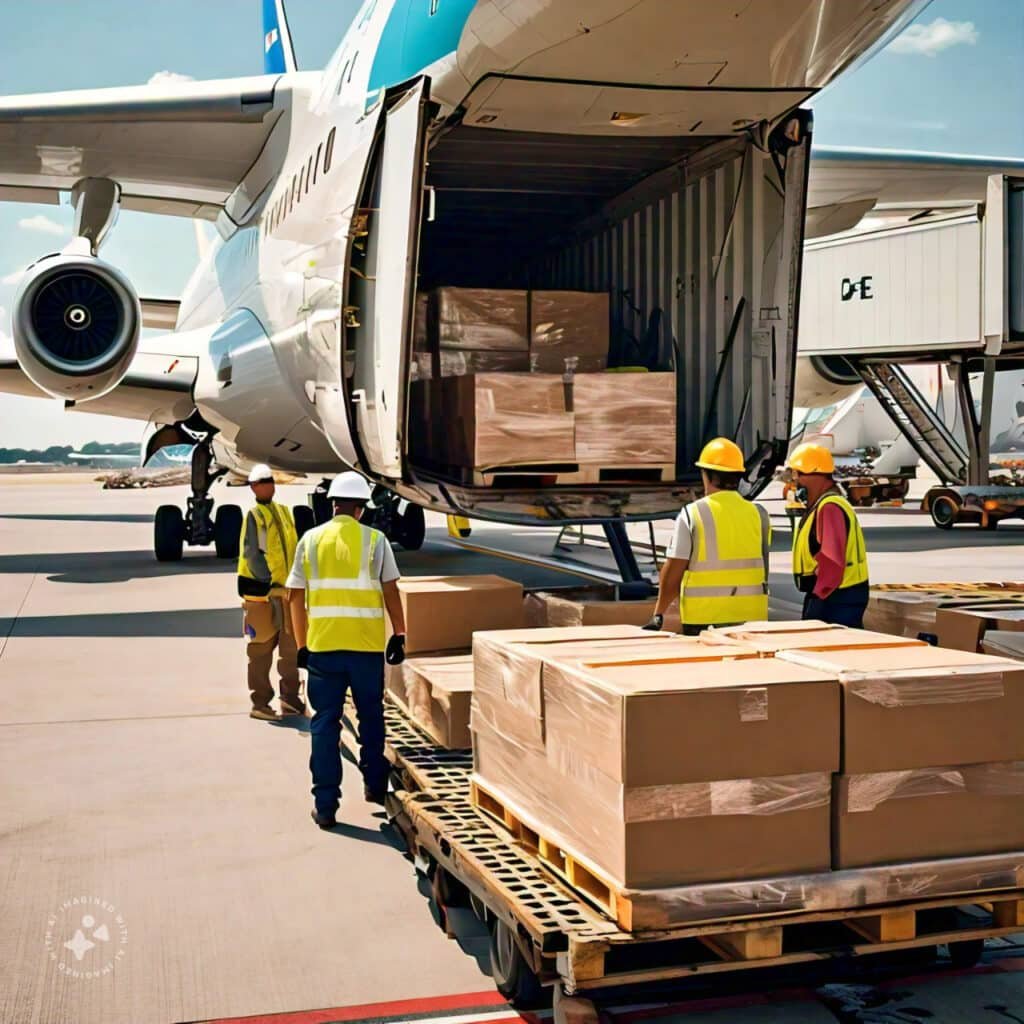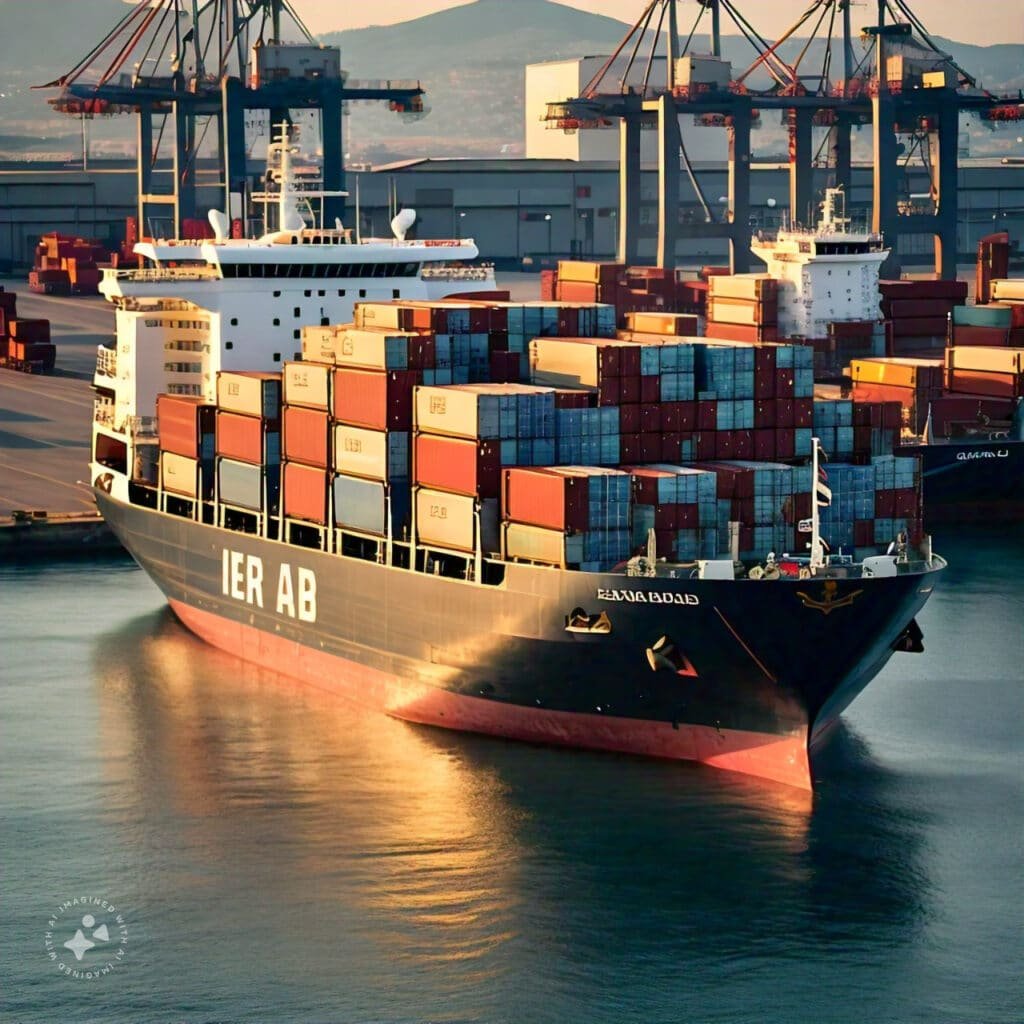Air vs. Sea Freight: Which is Right for Your International Move From Pakistan?
When planning an international move, selecting the right moving partner is essential to ensure a smooth and stress-free experience. Ishfaq Movers and Packers, a highly trusted and experienced moving company in Pakistan, has helped countless individuals and families with their relocation needs. From small shipments to full household relocations, they offer a variety of solutions to meet each customer’s unique requirements.
One of the most critical decisions you’ll face during an international move is choosing the right shipping method. The two main options—air freight and sea freight—come with their own benefits and considerations, and picking the one that best aligns with your needs can make a significant difference in cost, timing, and the overall experience.
What is Air Freight?

Typical scenarios where air freight from Pakistan is preferred include urgent relocations, where time is a top priority, or when transporting high-value items, such as electronics, important documents, or fragile valuables. Since air freight provides faster transit times, it can reduce the risk of damage or loss by minimizing handling and exposure to potential hazards.
Choosing international air cargo can be beneficial for relocation needs where efficiency and safety are key. However, air freight typically comes at a higher cost compared to other options, making it a more suitable choice for smaller, high-value shipments rather than bulk moves.
What is Sea Freight?

Common use cases for sea freight from Pakistan include budget-conscious moves or instances where time is flexible, allowing for the slower transit time of sea shipping. Sea freight is also highly cost-effective for bulky items like furniture and appliances, which can be accommodated in larger container shipping for international moves.
Among the sea freight advantages are its affordability and capacity to handle larger shipments, making it the preferred option for those relocating a household or large quantities of belongings. However, it’s essential to plan for a longer timeline, as sea freight transit times vary based on distance, customs processing, and port schedules.
Air Freight vs. Sea Freight: Key Differences
| Aspect | Air Freight | Sea Freight |
| Cost | Higher cost; suitable for small, high-value items due to premium charges. | More cost-effective for large volumes, making it budget-friendly for big moves. |
| Speed | Fastest shipping option; typically delivers within days. | Slower transit time; can take several weeks depending on the destination. |
| Reliability | Generally very reliable with regular flight schedules, minimizing delays. | Reliable but can be affected by weather, port congestion, and customs delays. |
| Item Suitability | Ideal for small, urgent, or high-value items (e.g., electronics, documents). | Best for bulky, heavy items or large household shipments, such as furniture and appliances. |
| Environmental Impact | Higher carbon footprint due to fuel consumption and emissions. | Lower carbon footprint per item transported due to fuel efficiency over long distances. |
| Shipping Time | Shorter shipping time, typically a few days (depending on customs clearance). | Longer shipping time; usually several weeks (dependent on port schedules and customs processing). |
| Cost Comparison | Higher cost per unit due to limited space and premium handling fees. | Lower cost per unit, as containers can accommodate larger quantities, reducing overall costs. |
| Choosing Based on Needs | Suitable if you need items quickly and are willing to pay for faster delivery. | Ideal if budget is a priority and you have flexibility on delivery time. |
This comparison table provides a clear breakdown of air vs. sea freight across key factors, making it easier to decide which shipping method best suits your relocation needs. Whether considering cost comparison, shipping time, or overall item suitability, these points can guide you in choosing between air and sea freight.
Factors to Consider When Choosing Between Air and Sea Freight
When deciding on the best shipping method for your international move from Pakistan, several key factors should be taken into account:
- Budget: If cost is a primary concern, sea freight is generally the more economical option, especially for larger shipments. Conversely, if you need to transport high-value or urgent items quickly, air freight might justify its higher cost.
- Timeline: Consider how quickly you need your belongings at your new location. Air freight offers the fastest delivery, typically within days, while sea freight can take several weeks. If your move is time-sensitive, air freight may be the best shipping method.
- Item Type: The nature of your items plays a crucial role in your decision. Air freight is ideal for small, valuable, or fragile items that require quick delivery. In contrast, sea freight is suitable for larger, heavier items or entire household shipments.
- Destination: The distance to your destination and the availability of shipping routes can also influence your choice. Air freight is advantageous for destinations with frequent flights, whereas sea freight may be preferable for less accessible locations.
By considering these factors for your international move, you can effectively choose the right shipping method that aligns with your specific needs.
Pros and Cons of Air Freight for International Moves
Pros:
- Speed: Air freight is the fastest way to transport items internationally, typically delivering within days.
- Security: Your items are generally more secure in transit, with reduced handling and exposure to potential damage.
- Reliability: Airlines operate on strict schedules, ensuring timely delivery with fewer delays.
Cons:
- Cost: Air freight is often significantly more expensive than sea freight, making it less feasible for large shipments.
- Weight Restrictions: There are strict weight limits for air cargo, which may restrict the volume of goods you can transport.
Real-life Scenarios:
- Scenario 1: A business relocating its office urgently requires electronic equipment for an upcoming meeting. They choose air freight to ensure their items arrive on time, despite the higher cost.
- Scenario 2: A family moving abroad wants to bring essential documents and personal effect. They opt for air freight for quick delivery and peace of mind.
Pros and Cons of Sea Freight for International Moves
Pros:
- Cost-Effectiveness: Sea freight is generally much cheaper than air freight, especially for large shipments, making it a budget-friendly option for families and individuals.
- Capacity: Shipping containers can hold a substantial amount of goods, allowing for bulk transport in a single shipment.
Cons:
- Longer Transit Times: Sea freight can take several weeks, which may not suit those needing their items quickly.
- Environmental Impact: While more efficient in terms of fuel usage per item, sea freight can still have a significant environmental footprint.
- Customs Processing: Sea shipments may experience delays due to customs inspections and processing times at ports.
How to Make the Final Decision for Your International Move
To help you evaluate your shipping options effectively, follow this step-by-step guide:
- Assess Your Budget: Determine how much you can allocate for shipping.
- Identify Your Timeline: Consider when you need your belongings at your new location.
- Evaluate Your Items: List all items to be shipped and categorize them based on value, size, and urgency.
- Research Destinations: Understand the shipping routes and availability for both air and sea options to your destination.
- Consult with Experts: Reach out to Ishfaq Movers and Packers for personalized guidance tailored to your specific situation.
By carefully evaluating these factors, you can select the best shipping option for your international move.
Conclusion
Choosing the right shipping method for your international move from Pakistan is crucial for ensuring a seamless relocation experience. Whether you opt for air or sea freight, understanding the differences and factors involved will help you make an informed decision. For more information and support during your move, feel free to reach out to Ishfaq Movers and Packers.
Ready to start your international moving journey? Contact Ishfaq Movers and Packers today for a consultation or quote tailored to your relocation needs. Our experienced team is here to assist you with all your shipping options, including air freight and sea freight. Let us help you make your move from Pakistan as smooth and stress-free as possible!
Related Articles:
- Sea Freight Shipping: What You Need to Know Before Your Move
- Air Freight Shipping from Pakistan: A Quick, Reliable Solution for International Moves

